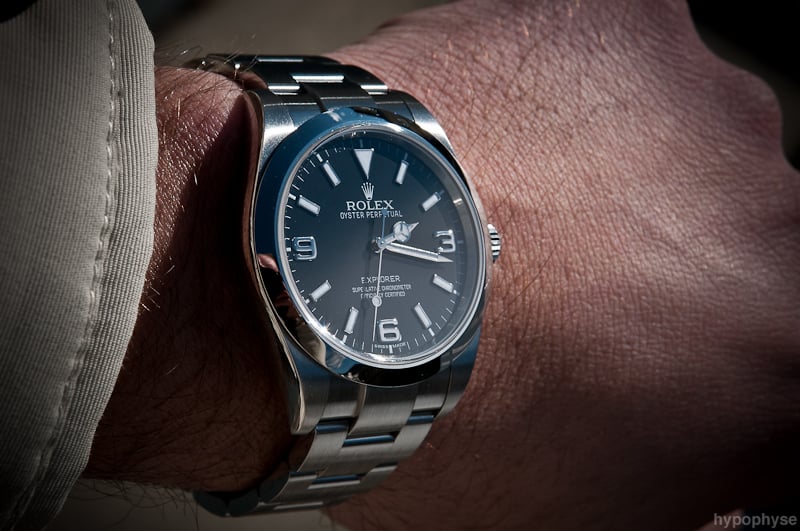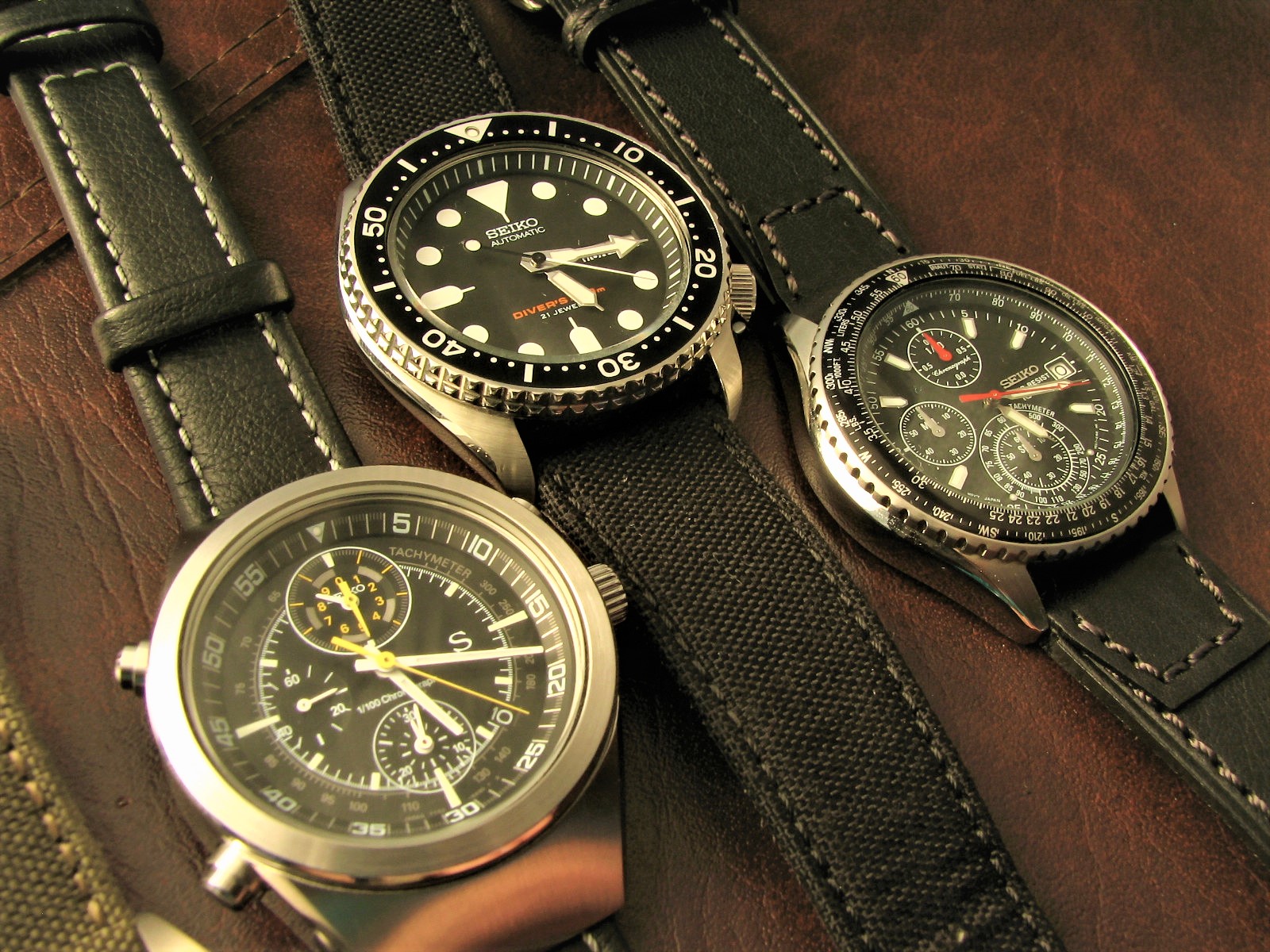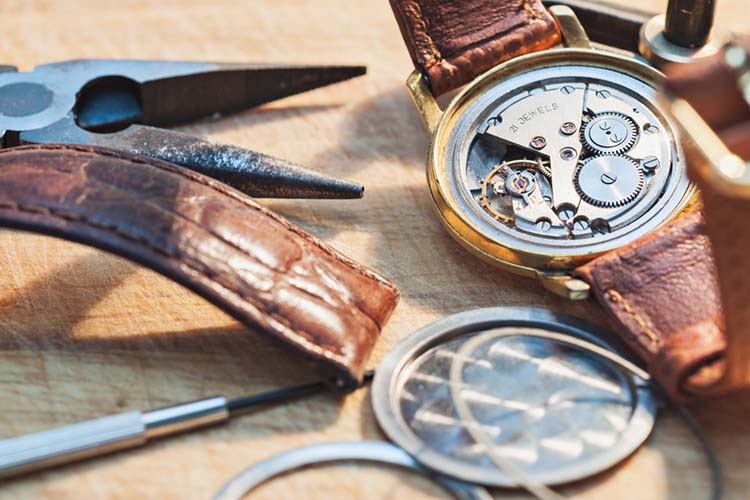With so many different types of watches on the market, it can be quite confusing trying to decipher the differences between them. While there is some debate on exactly how many types of watches exist or how to categorize them, we’ve come up with a complete list and give a brief on the main groupings.
At the most basic level, watches were broken into two main types – mechanical and quartz. However, the type of movement could also be automatic, kinetic, or solar. The type of watch face – analog or digital – or the watch complications (Moonphase, Chrono, etc) are additional ways to classify watches. We’ll take a close look at all of these types.
As well discuss below there are other ways to classify watches and break them down into even more types, so hopefully, this will be a useful resource when finding the best type of watch to fit your style and needs.
Table of Contents
Types Of Watches
Watch Display
One of the easiest ways to categorize watches is based on the display. Essentially, it is what you can see on the watch face.
Analog Watches
Analog dials are undeniably the most traditional display type of watch. It’s the one with an hour hand, a minute hand, and often a seconds hand.
It is so common and most likely, it’s the same type of clock face you grow up in within your house, in your school, and in almost every public infrastructure. It is even probably the type your parents used to teach you how to read the time. It is so common you probably don’t need any further explanation.
Digital Watches
Digital is the one that uses LCD screen to display the time and other information that may be available in the watch. It needs electric power so it is only available among quartz watches.
Hybrid Watches
From the term itself, this is the type that combines the first two types. At first glance, it looks like an analog watch, with the hour, minute, and second hands. Yet hybrid watches offer much more on their LCD screen. Many wearers prefer to have the classic look of an analog face combined with the modern convenience of apps, notifications and other features that smartwatches offer.
Some display time digitally on the LCD while there are also hybrid watches that include fitness trackers, may even be connected to a smartphone, and other features available in common smartwatches. These are hybrid smartwatches.
Click here to see our list of the best hybrid smartwatches.
Tactile Watches
Tactile watches, from the term itself, are those that are built to tell time even without you looking at it.
Although usually thought that they were built primarily for the blind, the first tactile (pocket) watches were created in the early 1800’s so the owner can discreetly know the time even without pulling the watch off his pocket. However, nowadays, since pocket watches are a rare option, tactile watches are generally built for the blind.
There are also various designs for tactile watches. Usually, instead of hands, they have two ball-bearing that rotate around the watch it mark the hour and minute. There are also some which cover you may open so you can feel the hands. For more accurate time reading, there are also Braille watches.
Touchscreen Watches
Since smartwatches often offer more features than they could fit on the screen, they usually go with touchscreen displays to easily navigate around its menu and other functions. As the name indicates, the watch functions are controlled primarily by touching the screen.
The Apple Watch is a perfect example, while they still have buttons where the traditional watch crown would be they are mostly controlled by touching different options on the screen.
Watch Style:

This category pertains to the overall visual appeal of the watch, Does the watch seem for everyday wear or for formal wear? Or maybe it has the overall appeal that outshines the crowd.
Casual Watches
Similar to clothing items, casual watches are the most common watches in terms of style. They are not elegant nor make you stand out in any situation. Rather, casual watches are designed for everyday use and for people that don’t really require much from their watches. As such, they are the most affordable ones and perhaps the best choice as a gift especially if you are not very familiar with the person to whom you want to give a watch.
Dress Watches
Contrary to the first style, this type of watch is best for business and formal wear. The best dress watches are those slim enough to be hidden under the sleeve of a shirt or suit. They are generally simple yet elegant to complement the wearer’s attire. They do not draw too much attention yet it is nice that the wearer’s watch match with his shoes and belt.
To keep dress watches simple, they usually have just the hour and minute hands; although a second hand and a date window are just fine additions. Nonetheless, the dial and bezel must be unornamented, preferably white, black or metallic to maintain the watch’s simplicity. Click here to see our top picks for the best dress watches under $500.
Dress watches are a good choice for a CEO, a lawyer, or for an investment banker. Yet, because of their simplicity, they are also best for those who prefer a minimalist lifestyle.
Fashion Watches
Not everyone agrees on the exact definition of fashion watches, but we generally refer to fashion watch brands that do not primarily specialize in watchmaking or have any established horological history. Fashion watches are sold by brands that are known for their reputation in the fashion world rather than their expertise in making watches.
Many of these brands license their watches to other companies to manufacture them, leaving the watchmaking up to others. These watches usually focus on aesthetics, branding and often have a prominent logo. Many fashion brands use inexpensive quartz movements but retail for premium prices due to their brand recognition and high demand.
Emporio Armani, Hugo Boss, Gucci, Michael Kors, and Guess watches are all examples of fashion watches. Click here to see a more complete list of fashion watch brands.
Luxury Watches
We feel that this article wouldn’t be complete without mentioning luxury watches.
There may be some debate about whether “luxury” is a specific style of a watch or if the watch brand’s own reputation, we’ve given our definition of a luxury watch here.
However, there is definitely a clear separation between fashion watches and luxury.
Luxury watches are generally made by companies that have a long history in watchmaking. While some luxury watches do use gold, diamonds, and other precious metals and jewels that add to the value, they also use high-end in-house movements and carefully craft their watches by hand. Some high-end watch brands actually make their own metals in-house to ensure quality.
Many of the top luxury watch brands are Swiss, they make their watches in limited numbers and are sold in exclusive retail settings. They generally hold their value better than other brands and are also coveted by watch collectors, celebrities, and the wealthy.
Patek Philippe, Hublot, Vacheron Constantin, Audemars Piguet, Lange & Söhne, Jaeger-LeCoultre, Tag Heuer, and Rolex are some of the best-known luxury watch brands.
Based on Movement:
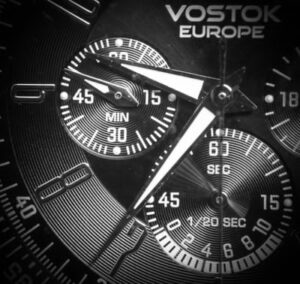
Watch movement is essentially that which gives life to the watch. It pertains to the mechanism that drives the watch to move.
Quartz Watches
Quartz is perhaps the most common type in this category. Quartz is also known as silicon dioxide or sand, which is an abundant mineral on earth.
Quartz watches use quartz crystal oscillation and an integrated circuit to keep time. Quartz watches offer accuracy at an affordable price. More so, they are more durable if compared to automatic watches.
The combination of accuracy, affordability, and durability makes quartz watches a popular choice.
Mechanical Automatic Watches
Originally, watches were designed to run only by using mechanical parts, meaning, without the use of electricity. Instead, they use the potential energy stored in a long spring or mainspring. The mainspring slowly unwinds and transfers the energy and needs to be wound occasionally.
An automatic watch (also known as a self–winding watch) is a mechanical watch that has a rotor attached to the movement. When you move your wrist with an automatic watch, the rotor spins- winding the watch back up again by tightening the mainspring. When you are not wearing them on your wrist, you can also keep automatic watches in a watch winder that moves gently back and forth and keeps it wound.
This mechanism also makes mechanical automatic watches easily identifiable. Because of the mechanical parts of automatic watches, their second hands tend to sweep giving a relaxed action that’s just nice to look at.
However, because they are being run by mechanical parts, automatic watches are not as accurate as quartz watches. They are also generally quite a bit more expensive than quartz.
Kinetic Watches
A kinetic watch is a combination of quartz and automatic mechanical watches.
Similar to automatic watches, it has a weighted rotor that causes the watch to move. However, in a kinetic watch, the rotor movement is converted to electricity by virtue of an internal dynamo. This electricity is then being stored in a power cell. To recharge, kinetic watches need to be worn. Kinetic watches are often confused with solar-powered watches, see an explanation here.
Chronometer Watches
Since automatic watches are nice to have yet are not as accurate as quartz, chronometers fill in the gap. Chronometers are made of high-quality materials that do not expand or contract easily with the change of temperature. Its movement is also more advanced than the rest to make it more accurate.
“Chronograph” also refers to the stopwatch feature on watches. See Chronograph in the “functionality” section below.
Technically, the name chronometer can only be obtained by those who were tested and passed the 16-day test of Controle Officiel Suisse des Chronometers (COSC), a testing institute in Switzerland.
However, since this test is quite costly, there are also other chronometers that have certified accuracy since their makers also have their own standard testings.
Spring Drive Watches
The watch with spring drive movement was created in1977 by Yoshikazu Akahane at Suwa Seikosha which later merged with Seiko.
The movement was first commercially released by Seiko and is now used in their Credor, Grand Seiko, and Prospex watch lines.
Similar to kinetic watches, spring drive is also a combination of automatic self-winding mechanisms and quartz accuracy. Yet, spring drive offers more than kinetic and is one of the most technologically advanced movements right now.
Spring drive also has a mainspring that stores potential energy, and the same rotor to wind the mainspring. With regard to timekeeping, spring drive uses a Tri-synchro regulator to keep time. It also has an integrated circuit coupled with a quartz crystal to ensure the accuracy of the watch.
Interestingly, the second hand of spring drive watches also move in a sweeping motion compared to watches that have a noticeable ticking motion every second.
For more, read this article about why Rolex watches don’t tick.
Based on Power Source:
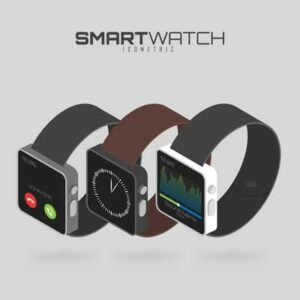 From the term itself, this categorizes watches based on the source of energy that powers the watches.
From the term itself, this categorizes watches based on the source of energy that powers the watches.
Solar Powered Watches
Solar watches capture solar energy through the photovoltaic cells on the watch’s face and convert them to electricity This electricity is then stored inside a power cell. After which, the solar watches basically function like quartz watches.
Citizen and Seiko compete directly with their Eco-Drive and Seiko Solar lines and are both known for making some of the best solar-powered watches on the market along with other brands that make solar timepieces including Casio and others.
Nonetheless, solar watches do not only use sunlight but all other lights that are bright enough. So ideally, it is a watch that can run forever. To make this even better, its power reserve can last up to 6 months. To recharge it, you just need to leave it under a bright light.
Quartz Watches
Primarily, quartz watches are powered by a battery that causes the quartz crystal inside to vibrate at a certain rate. Although quartz produces more accurate watches, the downside is you have to keep replacing the battery in order to maintain accuracy. Otherwise, the watch is essentially useless.
Know more about quartz watches in this article.
Lithium-ion Watches
Smartwatches, on the other hand, are usually powered by a rechargeable lithium-ion battery.
It is primarily important that they are rechargeable since smartwatches generally include other features that make them “smart”, such as fitness tracker, camera, GPS, etc. These features are usually “power-hungry”, therefore the need for a rechargeable battery.
Functionality:
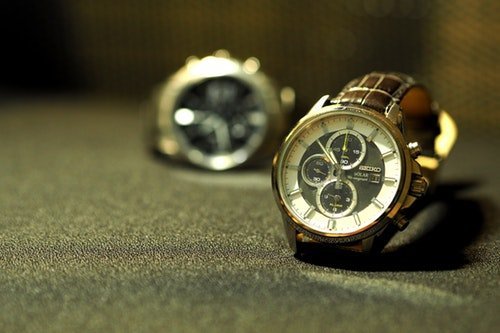
Nowadays, watches do more than just tell the time. They are now so diverse that they deserve to be categorized based on what can they offer other than just the time.
Chronograph Watches
A chronograph is sometimes referred to as an additional feature of a watch. However, since a chronograph adds functionality, it deserves to be referred to as a type of its own.
Chronograph functions as a stopwatch. It’s the 2 or 3 smaller circles with their own hands that you would find in a watch face. To use it, there are often two buttons on the side of the watch, surrounding the crown – one for start/stop while the other is for reset.
GMT Watches
GMT stands for Greenwich Mean Time. The key feature that differentiates a GMT watch is its extra hand. In addition to the hour, minute, and second hands, the GMT watch has a fourth hand that rotates separately from the other 3 hands. The fourth hand rotates around the face once every 24 hours.
Additionally, GMT watches have a rotating bezel that may be used to set to different time zones.
Calendar and Moonphase Watches
Similar to a chronograph, the moon phase is also a feature on watches and those that have this are called moon phase watches. Moonphase indicates the phase of the moon based on the calendar of the watch. It also indicates if it’s a day or a night by showing a picture of a sun or moon. Click here to see some of our favorite ladies’ moon phase watches.
Day & Night Watches
Day and night watches are practically similar to moon phase watches but quite limited. They only display whether it’s night or daytime.
Dive Watches
Dive watches are a popular type of watch designed to withstand water so they have features to do just that.
Their crowns are often screw-down, meaning they need to be screwed (using your fingers) to lock/unlock, and they have a thicker rubber gasket for better protection against water. Dive watches typically also have a rotating bezel that also serves as a timer to help drivers control how long they’ve been under the surface.
Check out some of the best affordable dive watches here.
Pilot Watches
Pilot watches, on the other hand, are designed for aviation. They were initially developed for fighter pilots. As such, they are designed to be easily read and have specific features that are useful for pilots. Most pilot watches include special tools such as tachymeters, altimeters, compasses and often have a slide rule bezel to help make calculations on the fly. They often come in large sizes and with numbers visible on the watch face.
If you’re interested in checking out this kind of watch we’ve come up with a list of our favorite pilot watches under $500 here.
Field Watches
Field watches, moreover, are built to be functional for the military. They must have a rugged ability to withstand water, dirt, sand, or even mud while maintaining accurate time. They should be tough enough in order to survive any mission their owner might face. Their key description: durable. Read more about field watches here.
Click here to see our top picks for the best field watch by budget.
Since they are durable, they are perfect too for the police, firefighters, and even mud-run racers.
Tool Watches
The last three watch types (Dive, Pilot, and Field) are sometimes grouped together in a wider group called tool watches that all have special functions beyond telling time. While there doesn’t seem to be a specific agreement on what defines a tool watch, they all have special features or “tools” that go beyond a standard watch.
This might be the inclusion of a slide rule on a pilot watch, tide readings on a sailing watch for helping with sea navigation or a compass or altimeter (see ABC watches) on watches designed for hiking or mountaineering.
Smartwatches
Smartwatches are a type of watch that usually allows connection to your phone and other gadgets such as Bluetooth earphones. The features a touch screen and provides many of the functionality of a smartphone on your wrist without having to constantly be reaching for your phone. Most smartwatches sync notifications, calendars, email, and other mobile apps.
As mentioned in the previous section, these smartwatches are “smart” because they offer a variety of features. However, not all smartwatches are the same. Some are water-resistant, some have a remote shutter for your camera, some can even measure your heart rate and track your sleep. Some offer all these and more while some do not. We’ve covered the different types of smartwatches here.
For a quick run-through, here are the types that we have covered in this article.
Watch Type Comparison Table
| Category | Watch Display | Watch Style | Watch Movement | Watch Power Source | Watch Functionality |
| Description | What you can see on the watch face | Pertains on the overall visual appeal of the watch | What drives the watch to move | What powers the watches | Pertains to what the watch can do aside from telling time |
| Types | Analog Digital Hybrid Tactile Touchscreen |
Casual Dress Fashion Luxury |
Quartz Mechanical Automatic Solar Kinetic Chronometer Spring Drive |
Solar Quartz Smartwatch |
Chronograph GMT Calendar and Moonphase Day and Night Dive Pilot Field Tool Smartwatch |
Hopefully, the table help clarifies rather than complicate the issue further. In the end, it appears there really is no definite consensus among watch experts even.
The Debate On Different Types Of Watches
Nonetheless, in order to make you fully informed on this topic, we have also listed here some other common opinions on how to categorize watches.
Two General Types: Quartz Watches and Mechanical Watches
This view generally sorted out the watches based on their maintenance needs. Quartz watches are those that do not require much maintenance while mechanical watches are those that would normally need maintenance every year.
Quartz watches include battery-powered, kinetic powered and solar-powered watches, Mechanical watches, on the other hand, are those manual winding and automatic winding watches.
Four Categories: By Movement, By Style, By Display, and By Class
This view is almost similar to what we presented here. However, they failed to cover some types that we have described in this article which causes a significant gap in the type of watches. Particularly, this categorization fails to include smartwatches in any of the said categories.
Seven Types of Watches
One particular view believes that there are only 7 types of watches that people need to know.
- Automatic watches
- Quartz watches
- Solar-Powered watches
- Dress watches
- Chronograph watches
- Dive watches
- Smartwatches
This option may be quite simpler compared to what was presented in this article. However, there are a lot of loopholes in it and you can’t clearly see what differentiates one type from the other. Under this view, there might also be a watch that may cover not just one type.
One familiar example is that an automatic watch may also be a dress watch.
There are other views on the different types of watches but those are pretty much negligible at this point. This article has provided a comprehensive list anyway.
Perhaps by now, you have realized that watches are not as simple as you initially thought. Watches can actually offer you much more than just time and that you can actually find watches that can suit your needs, on the field, in the air, or even underwater.
Why Would You Want to Know the Types of Watches?
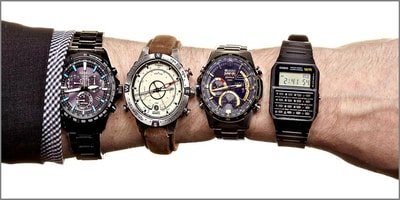 Have you realized that it would be kind of awkward to give your spouse and your teenager kid the same watch? More so, a lawyer’s watch is different from that of the police and even more different from those in the medical field. This is why you would want to know the different types of watches.
Have you realized that it would be kind of awkward to give your spouse and your teenager kid the same watch? More so, a lawyer’s watch is different from that of the police and even more different from those in the medical field. This is why you would want to know the different types of watches.
Once you know the types of watches, you will be able to narrow down your options whenever you are buying your watch or when you are choosing for one to give.
You’ve got to admit, the fact that there are so many choices makes it harder especially when you thought that they are all the same.
When you are knowledgeable about the types of watches, you will be able to spare yourself from wasting precious time (that’s the point of having a watch in the first place, right?).
You will be able to know what to look for in a watch, appreciate its features and give the most appropriate watch. Surely, your loved one or friend will appreciate your gift more if it is something that they could and would really wear.
You see, unlike other everyday things that are slowly phasing out because of technology, watches are actually getting more diverse. There are more types of watches than you even realize. There are so many kinds of watches that people are actually confused about how to categorize them. That is what this article is all about.
Whether in your profession, hobby, or simply for everyday life. You can also find a perfect watch to give to the people around you – to your young child, to teenage girls and boys, to your special someone or spouse, to your graduating kids, or even to their teachers.
After all, that’s been presented here, this article intends to help you and not to confuse or overwhelm you even more.


